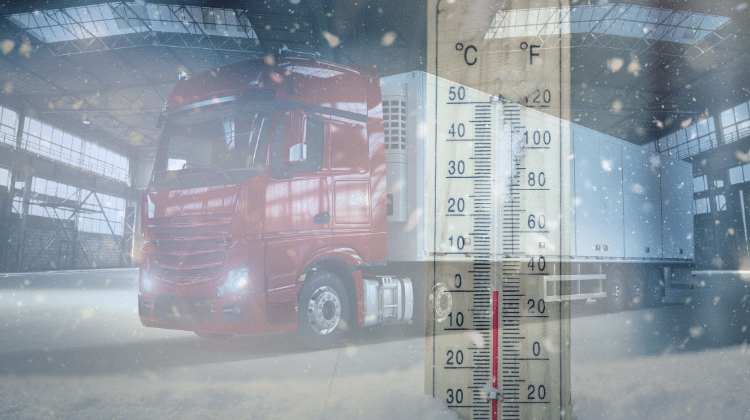
Brought to you by SpotSee:
With the sheer variety of temperature-controlled goods, equipment, vaccines, and medicine being shipped around the world today, there’s a great need for proper cold chain management and temperature monitoring. As the one doing the shipping, that responsibility ultimately rests with your organization. Failure to keep food, goods, and pharmaceuticals at safe temperatures can have adverse effects on your shipments.
There are several ways to alleviate these concerns, such as examining the transportation route for any possible issues and using proper cold storage techniques. When combined with meticulous temperature monitoring, these methods effectively prevent issues all along the cold chain.
Take a look at some of the ways you can use a combination of a time-temperature indicator (TTI) and other methods to manage your company’s cold chain below.
Understand What Time-Temperature Indicators Are and What They Do
Time-temperature indicators are a straightforward, but powerful technology. It’s basically an intelligent label that measures the temperature history of a product over a period of time.
In most TTIs, red dye moves through the readout window of the device when cargo gets exposed to unacceptable temperature conditions defined by the TTI’s active temperature range. The dye can run out slow during minimal temp exposure or very fast when longer exposure occurs.
Different types of TTIs exist for various applications and may use other methods for monitoring temps. Using TTIs to evaluate the temperature threshold allows supply managers to make quick decisions about the cargo and assess damage in real-time, making them an invaluable tool for successful cold chain management.
Know the Temperature Needs of What You’re Shipping in Advance
One of the more challenging aspects of cold chain transport is understanding how temperature affects different products and what temperature they need to maintain to stay safe.
Food requires certain temperatures to avoid spoiling. Whether you’re shipping fresh produce (which can spoil much faster than something preserved or frozen) or packaged foods, they need to remain at the right temperature to prevent bacteria growth. Bacteria have the potential to grow and multiply rapidly if foods are exposed to time-temperature abuse even for a short time. Food losses alone cost upward of $35 billion per year. That’s why TTIs are vital to monitoring such cargo during cold chain transport.
Similarly, vaccines and pharmaceuticals can become damaged and rendered unusable by temperature fluctuations/abuse during transport. This becomes especially troublesome when the biomaterial (such as organs for transplant and tissues) are transported long distances.
Even paint has certain temperature needs, so it doesn’t dry out in transit. Understanding your shipment’s temperature needs and applying it accurately reduces spoilage, prevents damage, and saves money without compromising your products.
Use a TTI to Measure In-Transit Temperature
It’s important to remember that different products need to stay within unique temperature ranges to avoid damage, spoilage, or time-temperature abuse. Applying a temperature indicator to every piece of cargo you ship along the cold chain grants key insight into how you can adapt to potential issues. Knowing if you need to divert, delay, or replace a shipment is critical to maintaining product integrity.
Temperature indicators cover a wide range of temps, from -18°C /0°F all the way up to 37°C / 99°F. You can find TTIs that cover 32 F, 35 F, 41 F, 46 F, 50 F, 68 F, 77 F, 86 F, and 99 F run-out ranges as well. Check with your manufacturer and established industry procedures to determine which temperature indicator you’ll need for a particular shipment.
Use Proper Packing for Your Cold Chain Shipments
Another cold chain challenge is proper packing. Robust packing procedures work in conjunction with TTIs as a proactive measure to prevent damage. Specialized equipment is required for cold chain transport, including refrigerators, thermometers, and freezers. If the equipment malfunctions, an entire shipment can be declared bad — even if only a few pieces of the shipment were exposed to higher temperatures. That’s why it’s integral to your operation to ensure such things don’t happen.
Other methods to proper pack shipments include ice packs, liquid nitrogen, gel packs, fridge boxes, and reefers (basically a full-service refrigerator truck). Each one is ideal for preventing damage and keeping things at the correct temperature. Some are better suited to food (reefers, ice packs, and fridge boxes), while others work better for pharmaceuticals and similar items.
Ensure You’re Using Proper Cold Chain Standards
To get the best performance out of your cold chain transport, it’s necessary to ensure your warehouse, refrigerators/freezers, and vehicles are maintained to proper cold chain standards and in good, working condition.
Your warehouse, vehicles, and intermediary shipping points should be maintained to ensure they can handle five major components of cold chain transport:
- Cold storage
- Cooling systems
- Cold processing
- Cold distribution
- Cold transport
Storing, processing, transporting, and distributing your cold chain cargo is only one piece of the puzzle. Your cooling systems must be up-to-date, able to perform their functions correctly, and maintained to health and safety standards for cold storage.
Using TTIs during the transport phase maintains the hard work your teams do in the other phases of cold chain distribution, bringing high-quality products directly to consumers. Selecting the right equipment and space for the job (and keeping it in good shape) is paramount to success in cold chain transport. It’ll keep your cargo safe, your customers happy, and reduce costs/damage across your entire supply chain well into the future.